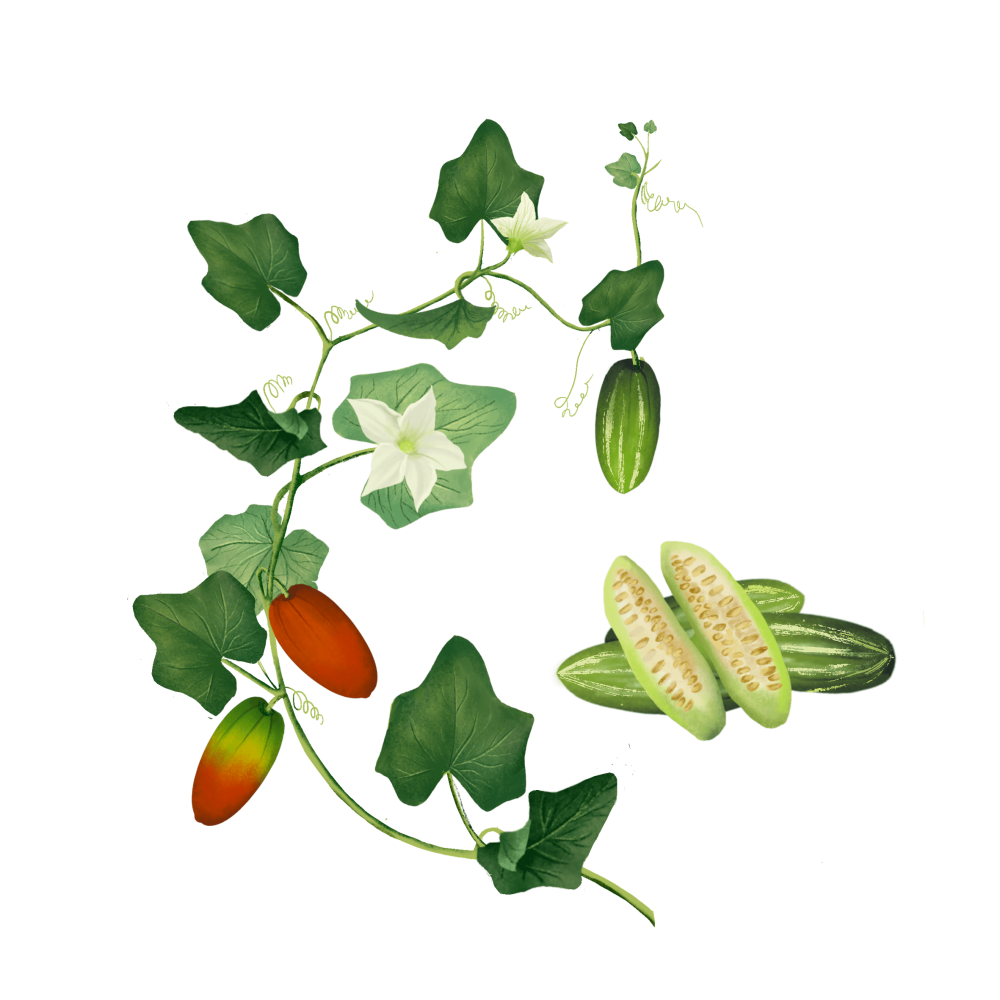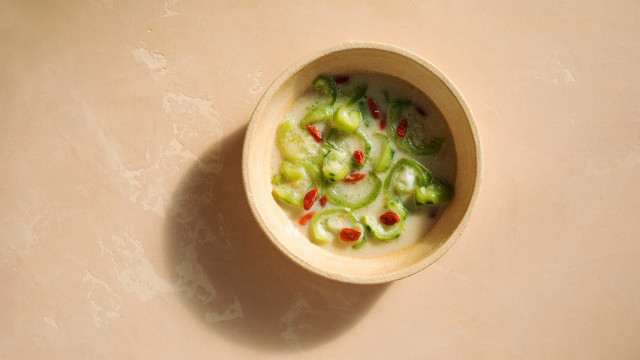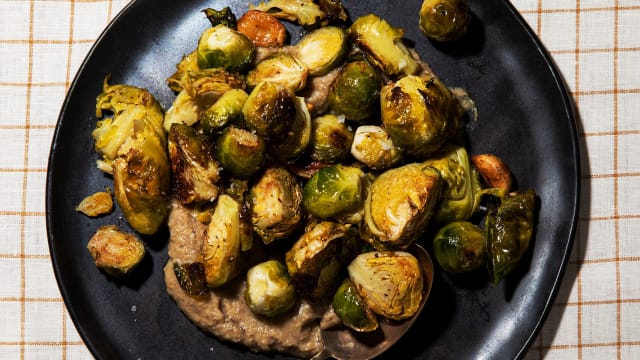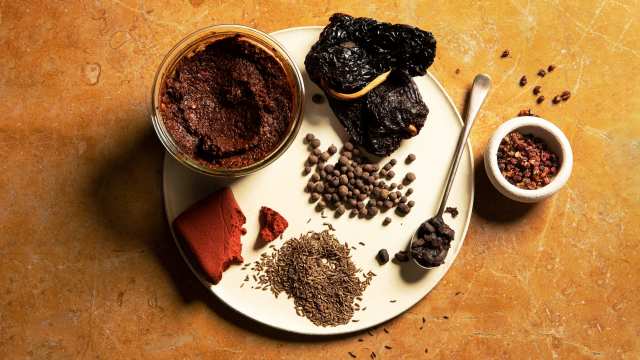Ivy Gourd

Latin name: Coccinia grandis
Uses: vegetable
You may have heard of okra being called lady’s finger, but have you ever heard of a vegetable called gentleman’s toes? That’s just one of the monikers for ivy gourd, a plant as prolific as the names given to it (baby watermelon is another one). Capable of being propagated from cuttings, ivy gourd is an aggressive vine with long tendrils that grab and smother other plants. When tender, the gourds look like miniature cucumbers, light green with distinctive white stripes. A thin layer of dense flesh protects an aqueous light green core filled with soft beige seeds. As they mature, the gourds turn darker green, while the insides go from yellow to green and red as it matures.
Why is ivy gourd healthy?
Ivy gourd is a good source of protein, calcium, dietary fiber, vitamin A, and beta-carotene. Bioactive compounds in the gourd have antibacterial and anti-inflammatory properties, and according to some studies, can help lower blood sugar levels for those with Type 2 diabetes. In traditional Asian medicine, besides the gourd, extracts from the leaf, root, and flower from the plant are used to treat diabetes, inflammation, cough and cold, and skin diseases.
What does ivy gourd taste like?
Though ivy gourd isn’t usually eaten raw, biting into a tender gourd is much like biting into a cucumber, but with a tingling metallic aftertaste. Mature gourds are softer and mildly bitter. Young ivy gourds soften when cooked, with a neutral vegetal flavor and a fleshy mouthfeel.
Where does ivy gourd grow?
Ivy gourd is native to Africa and Asia, and can also be found in Australia and the Pacific. It flourishes in tropical climates and is grown extensively in southern India, where it is a common kitchen staple.
How do I prepare ivy gourd and what do I pair it with?
Lop the tips off and quarter them lengthwise or cut into rounds and cook as you would a zucchini (the more mature the gourd, the longer it will take to soften). It pairs well with onion and garlic, as well as souring ingredients like tomato or tamarind. Across India, it is made into stir-fries and curries, and sometimes even batter-fried to make fritters. In South India, it’s added to sambar, dal, chutneys, and pickles. In Thailand, it is the main ingredient in the clear soup kaeng jued tum lueng. It is also used along with betel leaves in the northern Thai dish kaeng khae, as well as in kaeng lieng, a spicy vegetable soup.
Surprising fact:
In the 1990s, ivy gourd became so rampantly invasive in Hawaii that scientists introduced a moth and two types of weevils that fed on the plant to control its growth. Called biocontrol, this method of stopping the spread of one species by introducing another has both supporters and critics.




